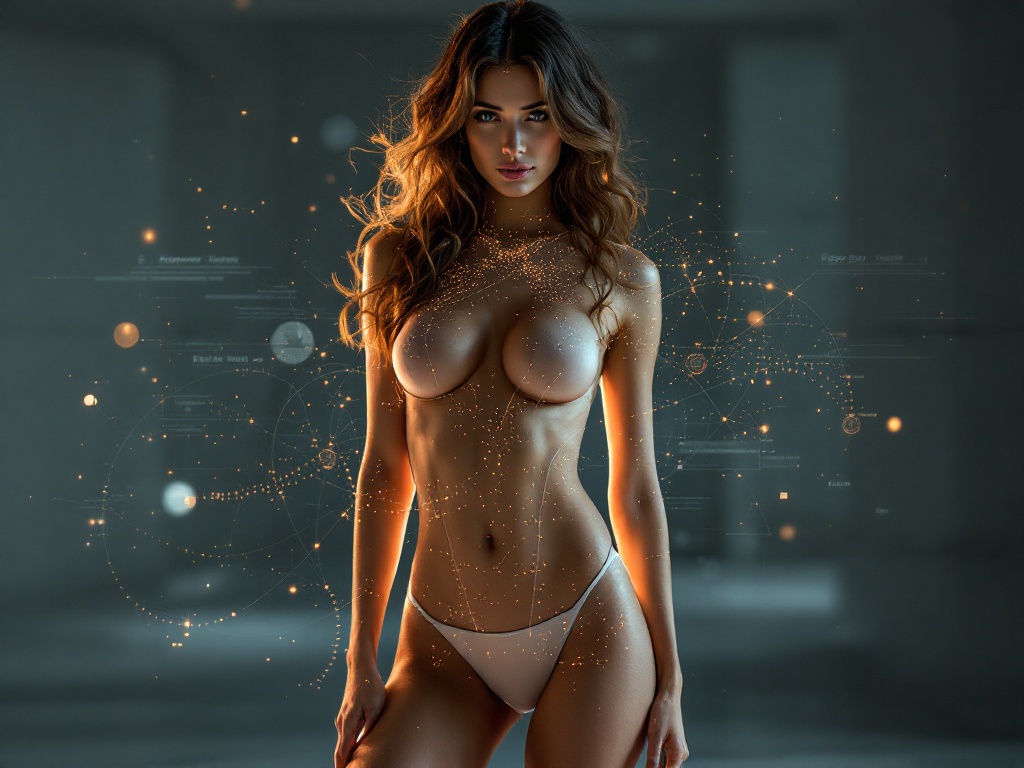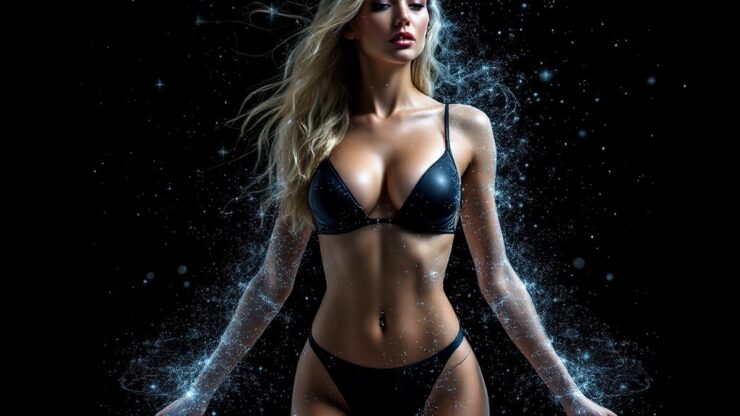The convergence of artificial intelligence (AI) and artistic expression has transformed how creators interact with their work, particularly in niche areas like erotic imagery. Through the lens of deep learning, a subfield of AI, artists are discovering new dimensions of creativity that challenge conventions and spark conversations. As technology continues to evolve, so does the potential for producing lifelike representations that reflect human desire and intimacy. This article explores the applications of deep learning in the creation of erotic imagery, examining the complexities involved and the ethical questions they raise. It serves as a comprehensive guide for those curious about the technology’s role in contemporary art. Ultimately, it aims to paint a picture of where deep learning might lead us in the world of erotic digital art.
What is Deep Learning?

Deep learning is a specialized branch of machine learning that employs algorithms inspired by the structure and function of the human brain. Unlike traditional machine learning methods that rely on simpler statistical techniques, deep learning utilizes layered neural networks to process vast amounts of data and learn complex patterns. This ability to manage large datasets allows deep learning systems to automatically improve their performance over time. In this section, we’ll break down the core components that define deep learning and what sets it apart from earlier methods of artificial intelligence.
Understanding deep learning requires familiarity with several key concepts, including neural networks, training datasets, and algorithms. Neural networks consist of interconnected layers of nodes, each processing information and passing it to the next layer. A training dataset is used to teach the neural network by presenting it with numerous examples from which it can learn. The algorithms dictate how the networks adjust based on the feedback received during this training phase. With these elements at play, deep learning can create highly realistic outcomes in various domains, including the often-controversial genre of erotic imagery.
The Intersection of Technology and Art

The journey of digital art has been greatly influenced by technological advancements. From the rise of graphic design software to the advent of 3D modeling, technology has continuously shaped artistic expression. In the realm of erotic imagery, this evolution has opened new avenues for creation that challenge traditional boundaries. Artists are now equipped with tools that enhance their imagination, enabling them to create works that are not just visually striking but also emotionally resonant.
Applications of Deep Learning in Erotic Imagery
The capabilities of deep learning are particularly evident in the realm of erotic imagery, where several applications and tools are making waves. Generative Adversarial Networks (GANs) and style transfer techniques are two prominent methods that significantly enhance the quality and appeal of erotic art. By integrating these technologies, artists can produce stunning visuals that often blur the lines between reality and fantasy.
Generative Adversarial Networks (GANs)
GANs consist of two neural networks competing against each other, leading to the generation of remarkably realistic images. The generator creates images while the discriminator evaluates them, providing feedback to improve future outputs. This dynamic process allows for continuous learning and refinement of the final creations. Numerous projects have emerged using GANs to produce erotic visuals that are not just artistically appealing but also often provocative in their themes.
Style Transfer Techniques
Style transfer techniques allow artists to infuse their imagery with distinct aesthetics while maintaining the essence of the original subject. This approach can be particularly effective in erotic art, letting creators experiment with various styles to evoke different emotions and interpretations. Current applications range from apps that enable users to apply artistic filters to their photographs to more sophisticated software used by professional artists. Here are several notable applications:
- Artisto: An app that transforms user photos into artwork using style transfer.
- DeepArt: A platform that allows users to create unique visuals by blending styles.
- Runway ML: A creative suite that offers tools for artists exploring the intersection of AI and creativity.
| Technology | Application | Effectiveness |
|---|---|---|
| GANs | Generating realistic erotic imagery | High |
| Style Transfer | Applying different artistic styles | Moderate |
| Neural Networks | Image recognition and enhancements | High |
Ethical Considerations
As technology evolves, so does the conversation surrounding the ethical implications of creating and disseminating erotic imagery through deep learning. These issues are especially pertinent in digital art, where representation and consent play crucial roles. Artists must navigate the complex landscape of ethical considerations, ensuring that their work does not perpetuate harmful stereotypes or exploit individuals without their consent. This ethical framework serves as a foundation for responsible artistic expression, leading to healthier conversations surrounding intimacy and representation.
Consent is a cornerstone of ethical artistic practices, especially in the realm of erotic art. Artists have a responsibility to depict individuals and bodies with respect, ensuring all representations are consensual and reflective of diverse identities. This responsibility extends to how artists engage with their subjects, whether they are sourcing images or inspiration from existing material. Addressing the challenges of portraying diverse bodies and identities is vital in promoting acceptance and understanding within both the artistic community and society at large.
Challenges in the Creation of Realistic Erotic Imagery
Despite the advancements in technology, several challenges come with creating realistic erotic imagery through deep learning. Technical barriers include the need for high-quality datasets to train neural networks effectively. Additionally, societal and cultural stigmas surrounding erotic content can hinder artistic freedom and expression. Balancing creative ambitions with these challenges is crucial for artists aiming to push boundaries while being mindful of their social impact. The duality of freedom and responsibility lies at the heart of the creator’s journey in this intricate realm.
Future Trends in Deep Learning for Artistic Expression
The future of deep learning in artistic expression, particularly within the realm of erotic imagery, holds exciting potential. As technology progresses, we may see advances in personalization, where algorithms tailor artwork to individual preferences and identities. Emerging technologies, such as augmented reality (AR) and virtual reality (VR), could allow users to engage with erotic art in immersive environments, breaking down more barriers and fostering genuine connections. As these techniques grow, artists and audiences alike must adapt and recognize the vast opportunities that lie ahead in redefining eroticism through the lens of technology.
Conclusion
The interplay between deep learning and the creation of realistic erotic imagery presents a captivating exploration of art, technology, and ethics. While offering unprecedented opportunities for artistic expression, this journey is fraught with challenges that artists must navigate carefully. The future possibilities are both exciting and daunting, as creators grapple with the responsibilities that come with pushing creative boundaries. As the technology continues to evolve, so will the discussions around consent, representation, and the ever-changing definition of intimacy in the digital age. Embracing this dynamic landscape may ultimately lead to new forms of creative expression that resonate more profoundly with audiences around the world.
Frequently Asked Questions
- What is the role of deep learning in digital art? Deep learning enhances the abilities of artists and developers to create more realistic and complex imagery through advanced algorithms and neural networks.
- How do GANs contribute to erotic imagery creation? GANs help in generating high-quality images by having two neural networks compete against each other, leading to more realistic outputs.
- Are there ethical concerns with deep learning-generated erotic art? Yes, concerns include issues of consent, representation, and the potential for misuse of generated images.
- What are the future prospects of deep learning in art? Future trends may include increased personalization, more sophisticated tools, and broader acceptance of AI-generated art in various industries.
- Can anyone create erotic imagery using deep learning? While accessible tools exist, a basic understanding of deep learning concepts can enhance the quality and intentionality of the produced art.
